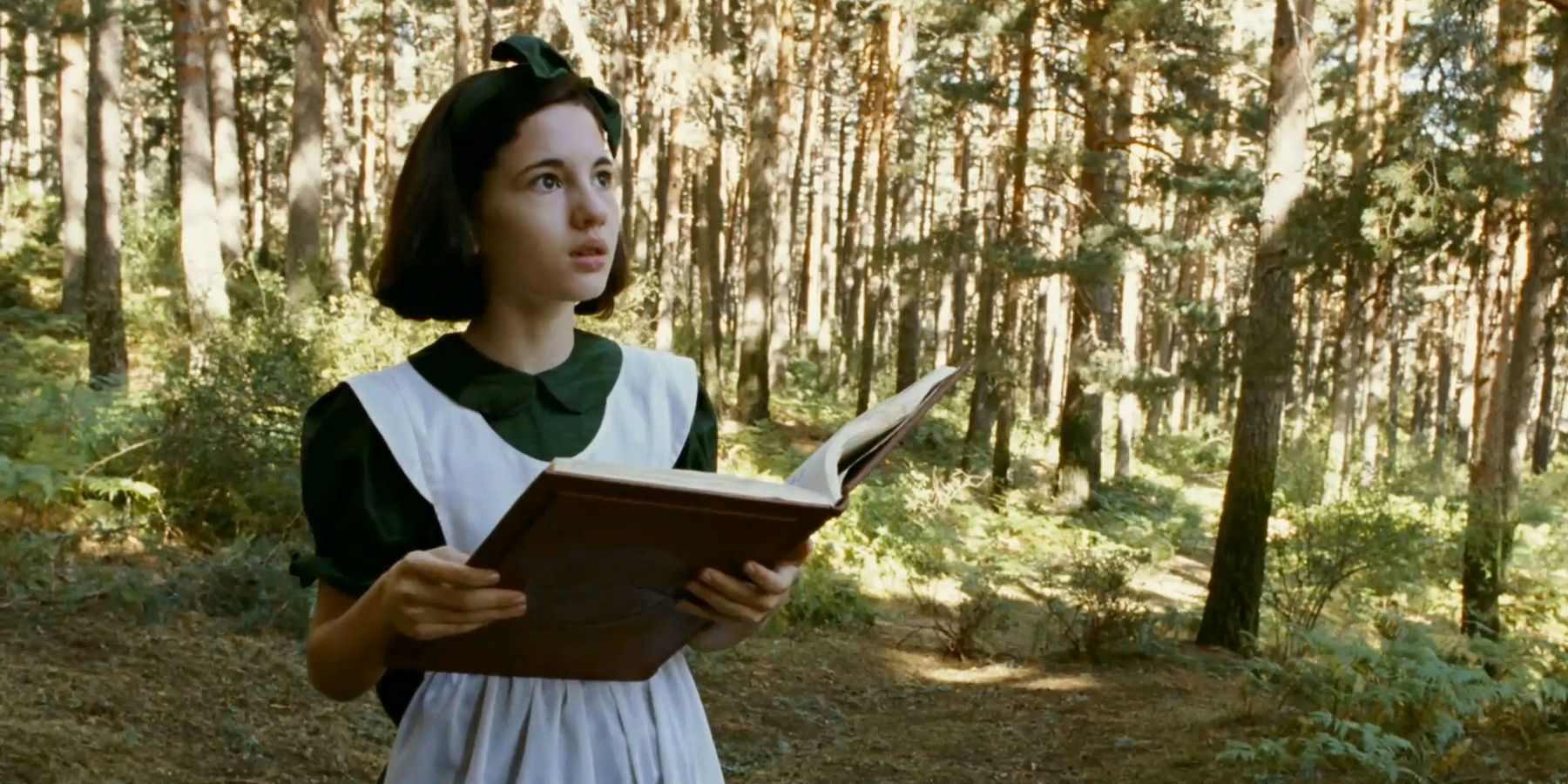Guillermo del Toro’s film, ‘Pan’s Labyrinth,’ features numerous generic conventions of the fantasy genre but to use a single category to define this work would be an injustice to its complexity. On closer inspection it is evident that del Toro provides us with the base genre of fantasy, in order to implant premature assumptions into the viewers mind which he later twists and manipulates through the insertion of features from other genres, such as horror and war.

In the opening shot of the film, we are boldly introduced to the image of a bleeding young girl lying on a cold dark floor. Whilst the architectural structures of the underground realm in this scene are very fantastical, featuring twisting staircases and towering spires, and the introduction to the narrative of the princesses tale is clearly fantastical, something seems off. This type of foreshadowing opening shot, which we know we will circle back around to, seems more typical of the war genre, in which a tragic death of a good soldier is very much expected, that’s all part of the plan. But the princess isn’t supposed to die is she? Whilst other movies in the fantasy genre, particularly Lord of the Rings and the Hobbit, depict key historical crimes of the human race in a more subtle way, for instance the comparison between the Black Riders and the Gestapo, del Toro selects this opening shot to instantly inform us that the comparisons in this fantasy will be far more blunt, less disguised, and more real. Even to the extent that del Toro does not construct comparisons but simply depicts the real world sins; even prior to the first shot, the intertitle informs us of the film’s historically accurate setting: The Spanish Civil war.

Ofelia is a classic example of the typical protagonist in a fantasy film; she is curious, naturalistic, and crossing the border between puberty and adulthood providing a perfect physical representation of a coming of age. Focusing on the generic convention of a curious protagonist, this characteristic is often only explored in act one of the narrative; he protagonists incapability to follow the crowd, and curiosity leads them to make a key discovery, which is typically finding a whole new world. This is the disturbance which marks the beginning of the second act -in ‘Pan’s Labyrinth,’ this is Ofelia’s first encounter with ‘The Faun.’ However, in a classic fairy tale, after entering the new world the protagonist is often locked into a destiny; they must complete their quest in order to return to their original world. But ‘Pan’s Labyrinth’ differs in that Ofelia regularly crosses the border between the two realms. The fact that Ofelia is given free-will allows del Toro to create added tension as Ofelia’s only limitation is her curiosity, which does not seem to be in short supply. Hence we are constantly on edge as we have the prominent fear that Ofelia may be blinded by her curiosity and unaware that she is walking into a death trap.

The frequent insertions of elements from the horror genre are used for personal expression and to create suspense. Del Toro has a clear hatred towards Fascism and in general regimes which suppress creativity and freedom of expression. Hence the horror aspects are used to highlight the fear induced by these cruel regimes, just like the audience the citizens who must follow the commandments of these regimes are constantly on edge and possessed with angst. As well as the symbolism behind the fright which the audience experiences, the horror elements also make for great entertainment; sitting down with a group of friends or family to embark on a collective journey of shared fear is a very desirable cinematic experience. In fact throughout the whole film del Toro creates tension and excitement, to entertain but, perhaps more importantly, to gain the audience’s interest and subsequently buy del Toro a few minutes of creative freedom to express some more complex individual ideas.
